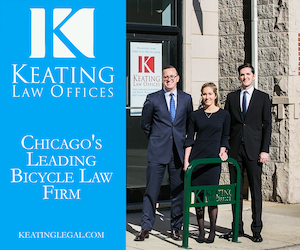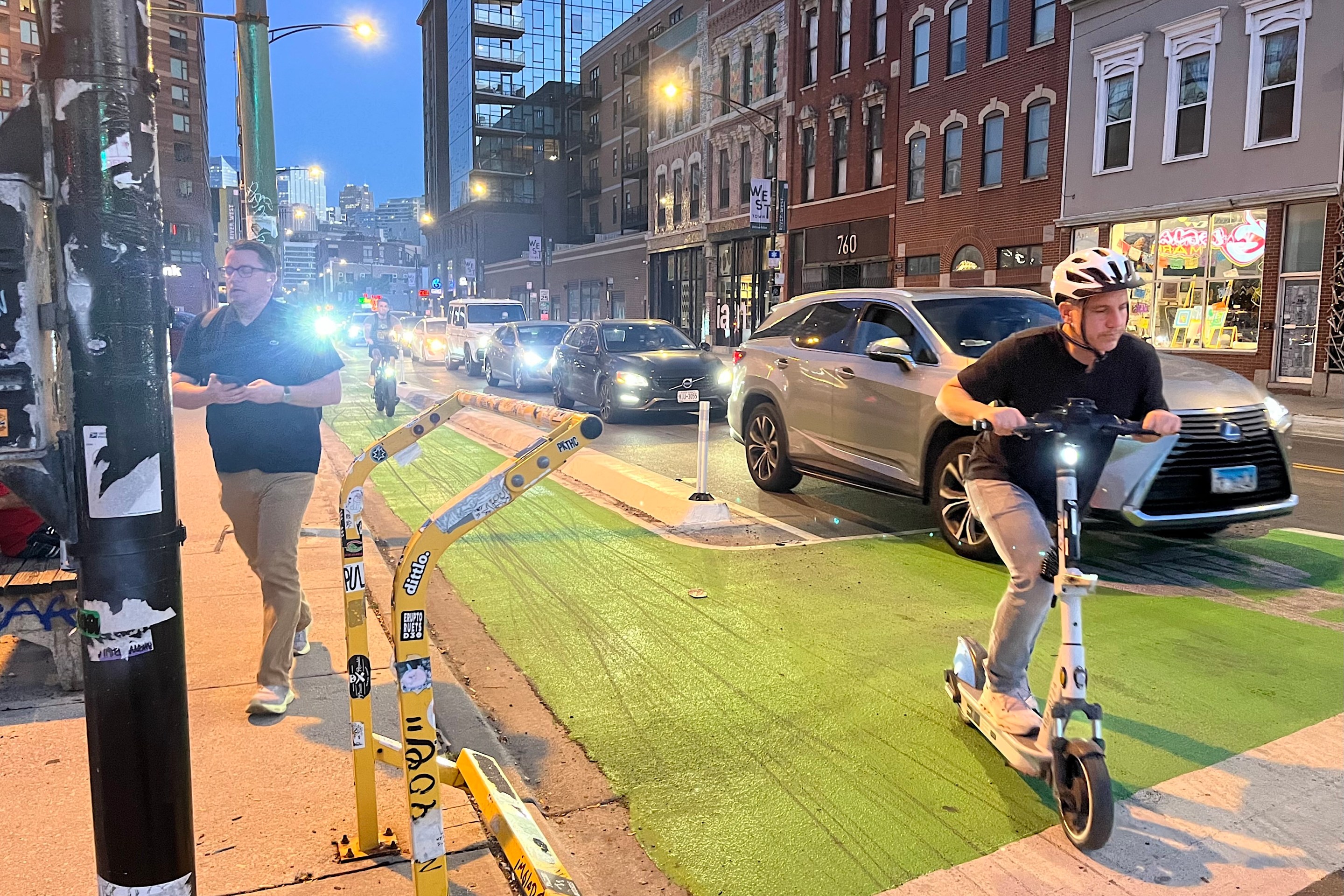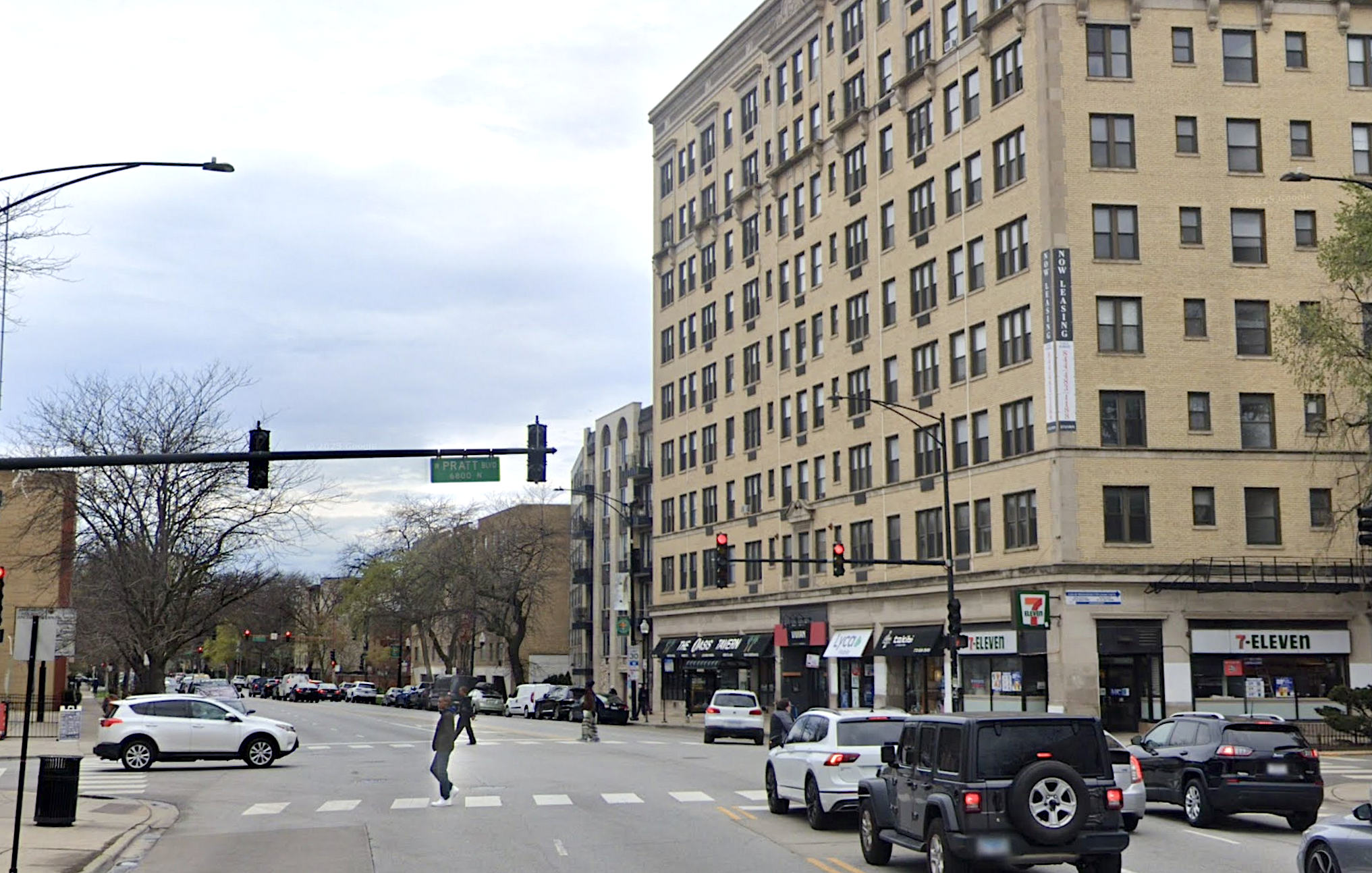By Molly Brown
According to the initial Chicago Police Department statement,on Thursday, September 18, around 7:41 AM, the female driver of a Chevy sedan was traveling westbound on the 4800 block of West Walton Street in Austin. She struck Anakin Perez, 9, who was in the street. The boy was take to Stroger Hospital, where he was pronounced. No other injuries were reported. The driver was placed into custody, and eventually released and cited for failure to exercise due care for a pedestrian in the roadway. Anakin was at least the 20th person struck and killed by a driver in the city of Chicago this year.
In the aftermath of Anakin Perez’s traffic death last week, I visited the street in front of McNair Elementary, where he spent his final moments alive. Many commentators on online news articles didn’t see a story here—a boy ran between parked cars, out into traffic and died when he was struck by a car. He should have been taught to be more careful.

But when you’re standing on Walton St next to McNair, it’s hard to believe a pedestrian could be killed here. It’s a one-way residential street with a single traffic lane and parked cars along both sides. Multiple 20 mph school zone signs are posted along the block. There are two speed humps. The car that struck Anakin—a Chevy Malibu small sedan—was a far cry from the massive SUV death machines that are involved in so many pedestrian and cyclist fatalities across the country. So given these facts, one can’t help but ask: how did this happen? How is Anakin not alive and recovering from injuries, or feeling relief that it was a near-miss? Why is a kid who tried to cross a small street in front of his school gone forever?

Anakin is dead because efforts to ensure safe school zones in Chicago have been woefully inadequate. We failed Anakin. It is incumbent on us to discuss what went wrong at McNair Elementary, and what we can do better at all school zones across the city. As a rubric, we can use what’s known as the E’s of transportation safety, specifically in this case: Enforcement, Engineering, Education and Encouragement.
Enforcement
Both parties in this crash appeared to be breaking traffic laws. Anakin was crossing outside of a marked crosswalk. The driver of the car was driving distractedly and possibly speeding. Could more enforcement of traffic laws in this school zone have helped?
Crossing guards and police officers in school zones enforce compliance with traffic laws. On Thursday, parents at the school pleaded for more crossing guards. McNair has just one CPS-employed crossing guard, stationed at an intersection northwest of the school, at Lamon and Augusta. There are none stationed on Walton, the street the school faces.
While crossing guards perform an admirable service and it’s understandable that the McNair community would want more of them, Anakin was not near an intersection when he crossed the street. A guard at an intersection would likely not have been able to notice him mid-block and stop him from entering the street. And there is simply no funding for additional crossing guards. Facing a massive budget crunch this year, CPS had to cut 100 guard positions and trim hours for workers in the Safe Passages program, alongside many other austerity measures.
To address the potential speeding on the part of the driver, enforcement of the 20 mph speed limit would require regular ticketing by police, or automated ticketing via speed cameras. The latter has been a controversial issue among Chicagoans, but speed safety cameras nationwide have been proven to reduce driver speed, crashes, injuries and death. There are speed cameras near some schools in the city, enforcing the 20 mph limit from 7 am - 4 pm, Monday through Friday. However, there do not appear to be any speed cameras in the entire Austin neighborhood area, let alone near McNair Elementary.
Engineering
With its speed humps and neon yellow school zone signs, it might seem like McNair has good safety infrastructure in place on Walton St. But while speed humps do force the driver to slow down while traveling over them, drivers are often observed speeding between humps to “make up for lost time.” It was in the section between speed humps on Walton where the Chevy driver hit Anakin.
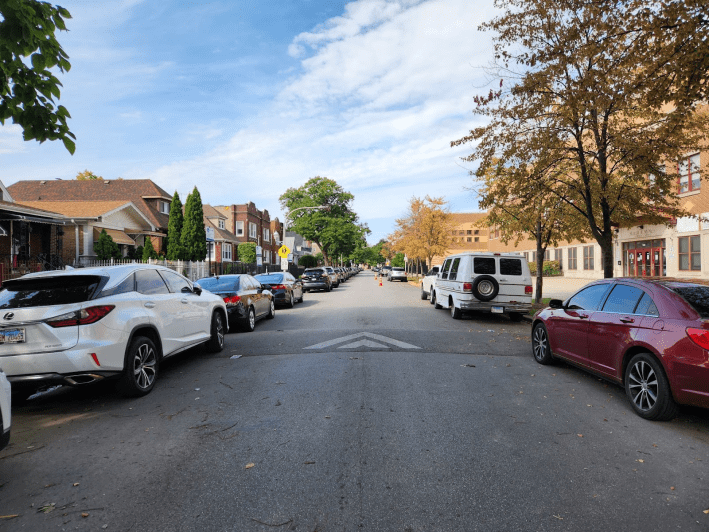
In a clear safety feature on Walton, there are several school zone speed limit signs posted along the street. But in the modern era of street design, engineers are recognizing that the physical features of a road can reduce vehicle speeds more effectively than a speed limit sign. Narrowed car lanes, added bike lanes, and pedestrian infrastructure such as curb bump-outs, refuge islands and raised crosswalks, all send drivers a message that there are vulnerable road users to be aware of in the area. Speed should be reduced and awareness heightened for people on foot or on bikes. The Chicago Department of Transportation recognizes this, which is why these are the features prioritized in their School Zone Improvement projects.
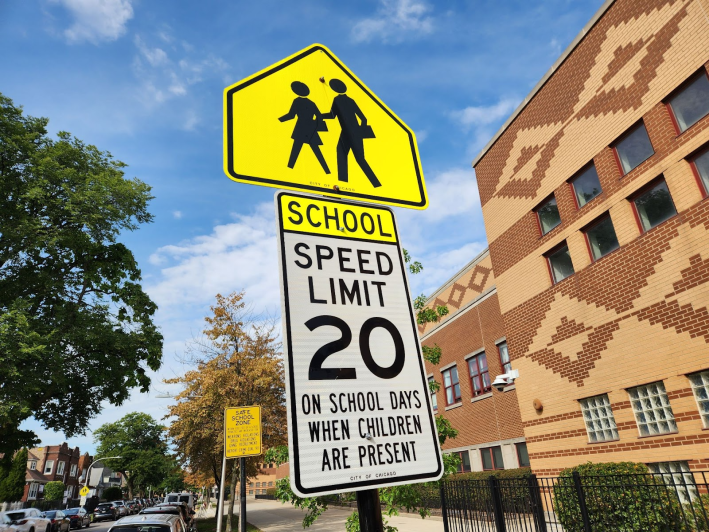
A mid-block crosswalk, in particular, is a safety feature that could have saved Anakin’s life. Walton Street is a long block full of residential units that sit directly across from McNair school. I don’t think Anakin was the only one, especially if running late, who took a short-cut. It’s a safe bet that many children and adults crossing on Walton wait for a gap in the traffic and cross mid-block. In so doing, they create what’s known in transportation planning as a desire line. A mid-block crosswalk would give these pedestrians a safe option to cross directly to the school’s front door. If the full slate of safety features were implemented—a raised crosswalk at the level of the sidewalk, curb bump-outs, and better mid-block street lighting—then pedestrians would be far more visible to drivers and less likely to be involved in a traffic collision.
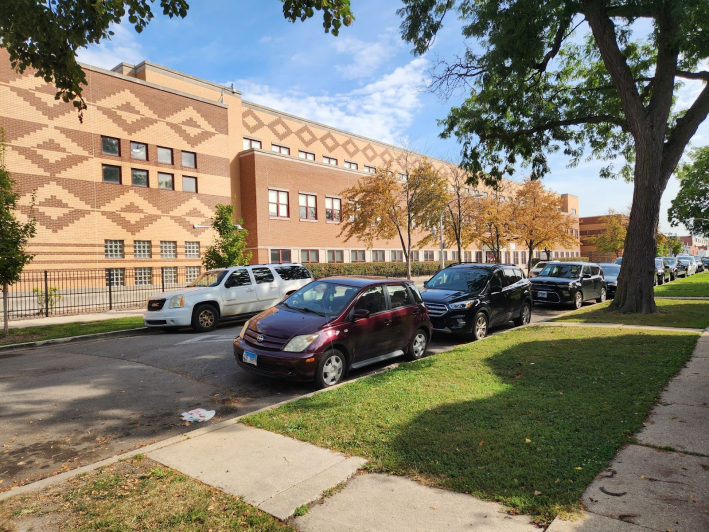
However, there are scant completed CDOT school zone improvement projects. In the city of Chicago, there are roughly 634 public and charter schools and 367 private schools, for a total of more than 1,000 schools serving youth in grades K-12. CDOT has completed school zone improvements at only 10 of them. Quite clearly this has not been a priority. With kids getting seriously injured or dying, that needs to change.

Lastly, there is another engineering measure that has found success around Europe and in New York and other major American cities: a school street. Almost free to implement, temporary blockades like sawhorses block off the street in front of a school during the morning arrival and afternoon dismissal times. Through traffic is disallowed, and children and families are free to use the street space, to play, to talk and to have a safe start and finish to the school day. A school like McNair, facing a small residential street, would be a great candidate for setting up a school street.
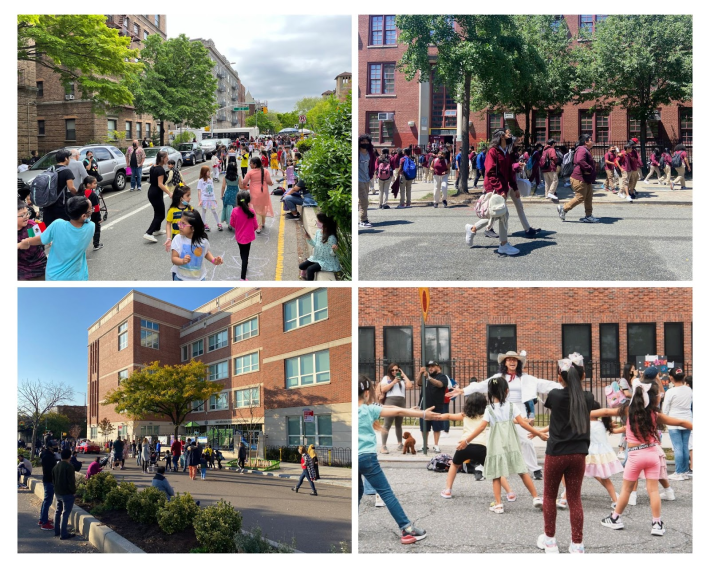
Education
As mentioned at the top, many online commentators felt this crash happened because Anakin hadn’t been properly educated on crossing a street only in a marked crosswalk. But it’s of course likely that he did hear this message at home and at school. In fact, there’s an Illinois law requiring K-8 schools to teach pedestrian and biking safety. But last Thursday morning he was late for school and took the fastest route instead. When considering kids and traffic safety, there are more important efforts we should undertake than education. It’s more pertinent that streets in school zones are engineered in a way where kids can make mistakes, because they’re kids, and not have it cost them their lives.
Therefore, the education needed is not for the children, but rather for the parent drivers who create hazards near every school in the city. In fact, according to 37th Ward Alderman Emma Mitts, the distracted driver whose car struck and killed Anakin was a fellow parent at McNair Elementary. After she successfully dropped off her child at the school, she sped off to the next task of her day. Reportedly, and appallingly, her car dragged Anakin’s body for 75 feet before his body rolled out next to the curb. The driver's attention was clearly not on the street and people around her, but on something else, perhaps her phone. To prevent distracted driving in school zones, parents and community members need to be educated on its dangers, and continually reinforced with this messaging.
My own kids’ CPS elementary school, probably the same as many other ones, fails to deliver this message. In the parent/student handbook, there are strong warnings about never using the teacher parking lot, and about keeping the car drop-off line moving along efficiently, but there’s nothing about driving with care and caution near the school. In none of the Principal’s Message emails does she urge parents to avoid distracted driving, to drive below 20 mph, and to yield to pedestrians and cyclists. School administrators could be doing a great deal more to communicate these messages to school families and to make their school zones safer.
Encouragement
This last E of encouragement is one that isn’t traditionally included in the E’s of transportation planning, but has been added by Safe Routes to School programs. The concept is simple: by encouraging more students to walk or bike to school instead of travel by car, streets are safer.
McNair is a neighborhood school, with its boundary lines in all directions less than one mile away. So the vast majority of the students at McNair live close enough to walk or bike to school. McNair could be a school where there are very few cars at arrival and dismissal times, and the preponderance of pedestrians and cyclists causes the drivers in the area to operate with extra caution. True, parents are more busy than ever and many have to rush off to work after drop-off. Many feel they need to drive because they don’t have any minutes to spare. But surely there are at least some who currently drive who could try to leave earlier and enjoy a morning walk with their kids.
In the interest of their students’ health and safety, McNair, and other schools like it, could launch Walk and Bike to School initiatives. A little bit of encouragement can have a snowball effect for a school community. The motonormativity of Chicago parents is a culture that can be changed. A great place to start is with a school-wide celebratory Walk and Roll to School Day.
Towards a Vision Zero for Chicago School Zones
As you may recall, in 2017, Mayor Emanuel and the City of Chicago launched a Vision Zero Action Plan, with a goal of eliminating deaths and serious injuries from traffic crashes by the year 2026. A laudable goal, but one that we are nowhere near achieving. In 2024, there were 109 traffic deaths in Chicago, 38 of which were pedestrians. And 2025 appears to be on a similar track.
If we want to get serious about reducing traffic deaths, we need to start by protecting our most vulnerable road users, a category which includes children. And conveniently enough, every school in Chicago has advocates who care about the safety of the children who walk through their building doors every morning. School administrators, teachers, staff and parents/caregivers can work together to effect change in the Enforcement, Education, Engineering and Encouragement of traffic safety. The powers that be—the Mayor’s Office, the City Council, Chicago Police Department, Chicago Public Schools and the Chicago Department of Transportation—will respond to sufficient political pressure. Some actions to lobby for include:
- More police presence during school drop-off and pick-up times, to help guide students and to enforce traffic laws
- Speed cameras in more school zones throughout the city
- CDOT School Zone Improvement projects funded and fast-tracked to more school zones throughout the city
- Where possible, school zone streets are put on a road diet, and bike lanes are added, to reduce vehicle speed and encourage active modes of transport
- Nonprofit organizations work with CDOT to help schools implement vehicle-free school streets, if it’s a good fit for their community
- School administrators launch Safe Routes to School programs, educating parents on safe driving practices and encouraging families to walk and bike to school
- Either CDOT or CPS installs a Safe Routes to School Coordinator, as many school districts and cities have, to support and connect SRTS efforts at different schools across the city
With a concerted effort, a Vision Zero for school zones could be achievable in the near future. We’re too late to prevent Anakin Perez’s death, but we still can prevent many more.
A GoFundMe page has been set up to support Anakin’s family.
Molly Brown lives on Chicago's Near North side with her two kids.
Fatality Tracker: 2025 Chicago pedestrian and bicyclist deaths on surface streets
Pedestrian: 20
Bicyclist: 2
Streetsblog Chicago’s traffic death numbers represent fatal crashes on Chicago surface streets, based on media reports and/or preliminary Chicago Police Department data.
2025 Chicago pedestrian fatality cases
• On January 5, 2025, a Jeep driver fatally struck Alex Rivera, 32, in the 2600 block of West 60th Street in the Chicago Lawn community area.
• On January 24, 2025, a hit-and-run SUV driver struck and killed Halyna Hudzan, 66, on the 700 block of North Oakley Boulevard in West Town.
• On February 1, 2025, a truck driver struck and killed Hattie Mickell, 76, walking in the street on the 0-100 block of South Western Avenue on the Near West Side.
• On March 13, 2025, a hit-and-run driver fatally struck a pedestrian in an alley at 1145 N. Harding Ave. in the Humboldt Park community area.
• On March 14, 2025, a motorcycle rider fatally struck Camryn Green, 26, as she crossed the street in the 6500 block of Higgins Avenue in Norwood Park.
• On March 17, 2025, a sedan driver sideswiped another car, then jumped the curb and fatally struck Jamie Cerney, 38, on the sidewalk of the 5200 block of West 63rd Street in Clearing.
• On April 7, 2025, a pickup driver fatally struck a 72-year-old man trying to cross DuSable Lake Shore Drive at Roosevelt Road in the Loop.
• On April 29, 2025, an allegedly intoxicated sedan driver fatally struck a woman, 25, on the sidewalk near 13th Street and Lawndale Avenue in North Lawndale.
• On May 13, 2025, an allegedly drunk SUV driver fatally struck a man, 76, on the 7000 South block of Western Avenue in the Chicago Lawn neighborhood and fled the scene.
• On May 16, 2025, a semi truck reportedly disobeyed his traffic signal when making a right turn and ran over and killed a 44-year-old man in the crosswalk at Cermak and Ashland avenues in Pilsen.
• On May 24, 2025, an SUV driver failed to yield while making a left turn, causing a crash and fatally striking Maria Ochoa, 88, at Archer and Laramie avenues in Garfield Ridge.
• On June 10, 2025, the left-turning driver of a large vehicle leaving a parking lot fatally struck a pedestrian mid-block at 4823 W. Diversey Ave. in Belmont Cragin.
• On June 21, 2025, a hit-and-run car sedan struck and killed Brendan Siddall, 26 on DuSable Lake Shore Drive near Waveland Avenue in Lakeview.
• On July 13, 2025, an allegedly intoxicated driver fatally struck Rosa Hernandez, 69, at Roosevelt Road and Halsted Street on the Near West Side.
• On July 19, 2025 a hit-and-run car driver fatally struck Marcela Herrera, 22, and seriously injured her fiancé, Mauricio Leyva, 21, at Cullerton and Ashland avenues in Pilsen.
• On July 31, 2025, around 6:53 p.m., a Chevy driver fatally struck a female pedestrian near 63rd and Morgan streets in Englewood. The driver was arrested and charges were pending.
• On August 3, 2025, around 3:23 a.m., a man, 31, was found unresponsive in the 7600 block of South Stewart Avenue in Gresham and later pronounced dead, the victim of a hit-and-run driver.
• On August 6, 2025, around 7:30 p.m., a hit-and-run SUV driver fatally struck a pedestrian in the 1400 block of West Estes Avenue in Rogers Park
• On August 9, 2025, around 3:20 a.m., a hit-and-run SUV driver fatally struck Jermaine Martin, 22 in the 5400 block of South Kedzie Avenue in the Gage Park community.
• On September 18, 2025, the driver of a Chevy sedan fatally struck Anakin Perez, 9, in front of his school on the 4800 block of West Walton Street in Austin.
2025 Chicago bike fatality cases
• On May 26, 2025, a Hummer SUV driver fatally struck Yader Castaneda, 18, at Randolph Street and Michigan Avenue in the Loop.
• On Saturday, July 5, 2025, a hit-and-run Audi driver fatally struck Shaheed Muhammed, 56, on his bicycle at 63rd and Halsted streets in Englewood. The victim died from his injuries on Thursday, July 10.

Do you appreciate Streetsblog Chicago's paywall-free sustainable transportation reporting and advocacy? We officially ended our 2024-25 fund drive in July, but we still need another $43K+ to keep the (bike) lights on in 2026. We'd appreciate any leads on potential major donors or grants. And if you haven't already, please consider making a tax-deductible donation to help us continue publishing next year. Thank you.



